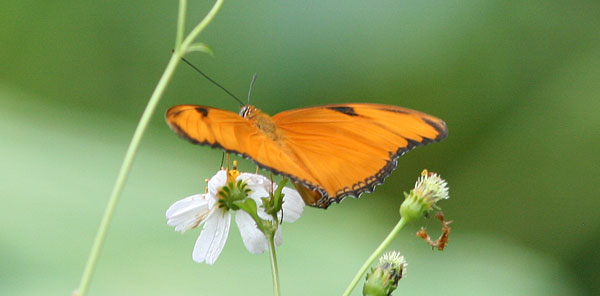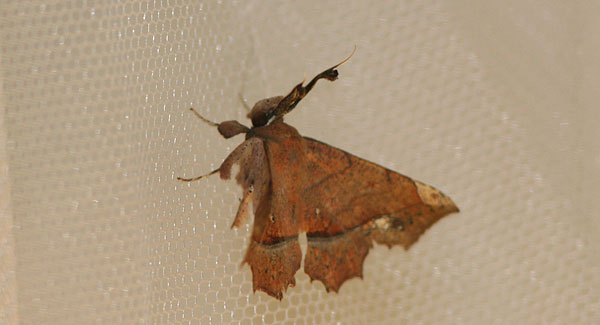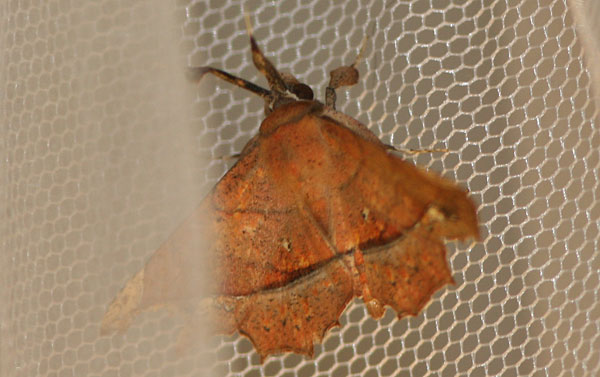I’ve raved about the birds (and beaches) of Jamaica, even highlighting the island’s lovely lizards, but I’d be remiss if I didn’t mention how much I liked its leps. Jamaica offers predictably potent butterfly watching. For example, the island is swell for swallowtail butterflies, with a number of endemics including the largest swallowtail in the Americas, the Jamaican Giant Swallowtail Butterfly (Pterourus homerus). Remarkable sulphurs and skippers flitted everywhere I went, as did hordes of heliconians. The Zebra Heliconian (Heliconius charitonius), for example, could be seen flashing everywhere.
![]()
Zebra Heliconian
Also on the scene along misty mountain trails and manicured garden grottos alike was Julia Heliconian (Dryas iulia delila), known to her friends simply as Julia. That flashing orange certainly turns heads but I was drawn to Julia’s soulful eyes.


Julia Heliconian
The butterflies in Jamaica were better than I anticipated but the moths really drove me mad. I finally gazed upon the infamous Black Witch on the veranda at Hotel Mocking Bird Hill; this amazing moth, one of the largest in the New World, is called the Duppy Bat in Jamaica, a moniker that makes sense once you’ve seen it flapping clumsily about.
Black Witches were just part of the cavalcade of motley moths I observed in my open air room each evening. The most fascinating was the mimic pictured below clinging to the mosquito netting over my bed. I’ve never observed such cool camouflage in a moth. Anyone have a name for this critter?















My experience of the black witch was that invariably it would explode out of the leaflitter at your feet whilst hiking the forest, flap in your face a bit and generally scare the crap out of you before flapping serenely off.
Hey Mike,
I am Jamaican, a teacher, and a naturalist. I would love to talk to you further about your trip to jamaica, your work with standardized testing, and butterflies.